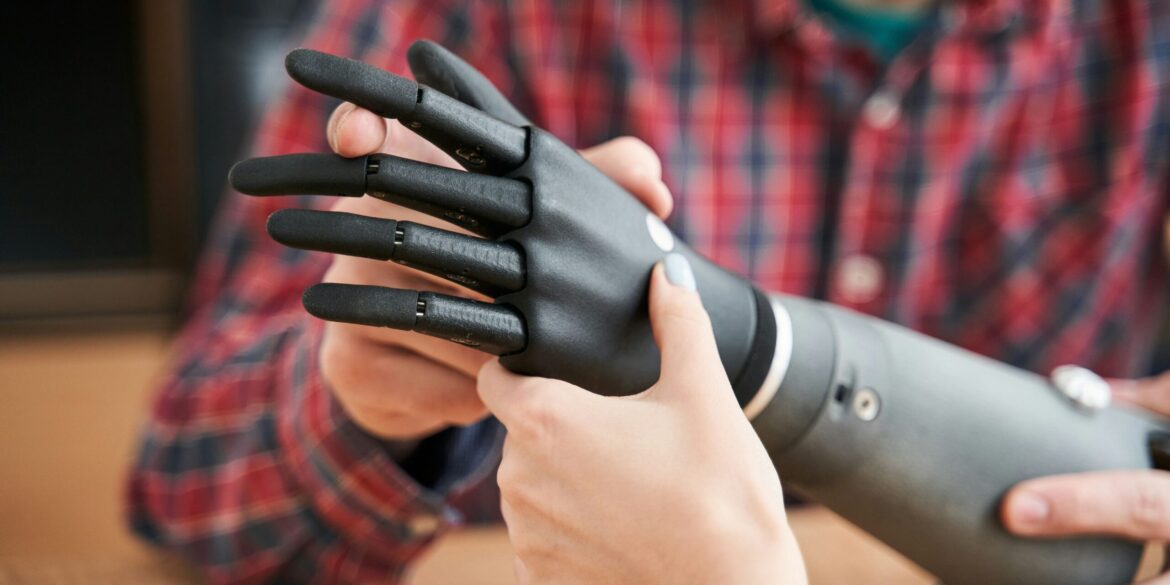BOSTON, MASSACHUSETTS — May 20, 2025
A new generation of AI-powered prosthetic limbs, developed by researchers in Boston, is transforming mobility for amputees by adapting in real-time to users’ movements. These state-of-the-art prosthetics use advanced machine learning algorithms to predict and respond to the user’s intentions, vastly enhancing both functionality and comfort. This innovation represents a major milestone in the integration of artificial intelligence with human biomechanics.
A Leap Forward in Prosthetic Technology
Unlike traditional prosthetic devices that require manual adjustments and offer limited adaptability, the new AI-powered limbs continuously learn from the user’s movement patterns. They make real-time adjustments, enabling smoother, more natural motion and reducing the cognitive burden on users. This innovation drastically improves the ease with which amputees can perform everyday tasks.
Developers aimed to build a prosthetic that acts as an extension of the user’s own body. Through the integration of AI, the prosthetic limb anticipates and executes movements in sync with the user, offering a highly personalized and intuitive experience. The limbs adjust not just to general walking or gripping motions, but to nuanced behavioral cues and environmental changes.
Enhancing Daily Life and User Experience
For individuals with limb loss, these advancements offer more than just technological novelty; they significantly enhance quality of life. The intuitive design allows users to walk, run, grip, and lift with unprecedented fluidity. Simple actions, such as navigating stairs or handling fragile items, become manageable tasks instead of frustrating challenges.
John Martinez, a 34-year-old veteran who lost his leg in combat, is among the first users of the new prosthetic system. He shared that the difference in mobility and comfort is night and day compared to earlier models. According to him, the new limb feels like a natural part of his body, freeing him from the mental effort required to operate his previous prosthesis.
Neural Interface and Sensory Feedback
One of the most groundbreaking features is the integration of a neural interface that connects directly with the user’s peripheral nerves. This interface allows the AI system to interpret neural signals, resulting in more accurate and immediate responses. Furthermore, it enables a limited but expanding form of sensory feedback, giving users the ability to “feel” textures and pressures through their prosthetic limb.
This bidirectional communication between the brain and the prosthetic device enhances user confidence and expands functional capabilities. Users are not only able to control their limbs with precision but also begin to regain sensory experiences that had been lost.
Overcoming Challenges
Despite its potential, the technology faces several hurdles. One significant barrier is cost. The sophisticated sensors, computing units, and neural integration mechanisms make these devices expensive to produce and maintain. Accessibility remains a concern, particularly for patients without comprehensive health coverage.
Another issue is data privacy. Because these devices continuously collect and analyze personal biomechanical data, robust security measures are needed to protect sensitive information from unauthorized access.
To address these concerns, developers are collaborating with insurers and regulatory bodies to create pricing models and policies that support broader access. Efforts are also being made to streamline the manufacturing process and reduce costs without compromising quality.
The Broader Impact and Future Applications
The success of AI-powered prosthetics marks a turning point in assistive technology. It paves the way for innovations such as full-body exoskeletons and robotic limbs that respond to thought commands. These advancements hold promise not just for amputees but for individuals with mobility impairments due to injury, aging, or neurological disorders.
As AI continues to evolve, so will its applications in healthcare and rehabilitation. The long-term vision includes creating fully integrated systems that restore complete limb function, including sensory perception and reflexive movement. Such breakthroughs have the potential to redefine how humans and machines interact, and how technology can restore independence and dignity to those affected by limb loss.
The integration of AI into prosthetics is not just a technological evolution—it is a profound shift in how we enhance and extend human potential.

